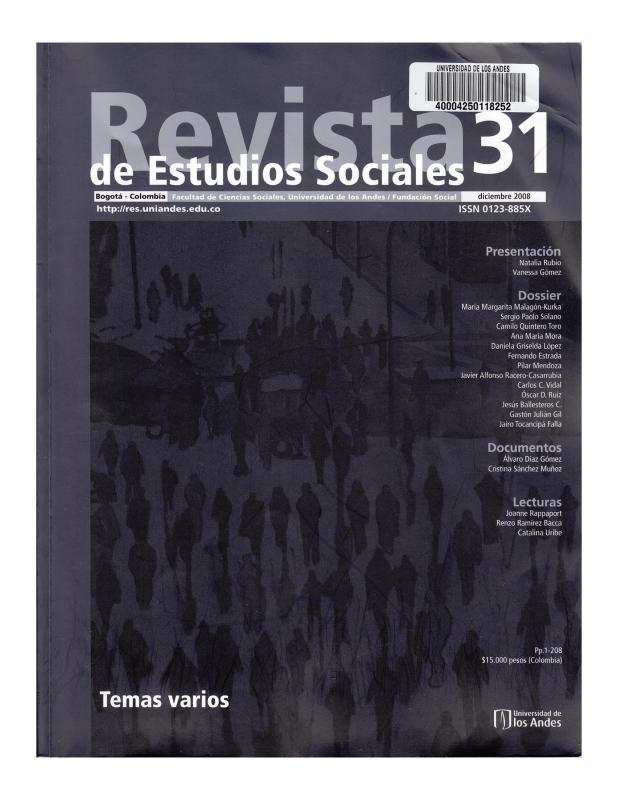This article should be understood in relation to “Gráfica testimonial en Colombia” [see doc. no. 1092323], a text by art historian Ivonne Pini that addresses the rise of graphic art in Colombia in the seventies as well as two contrasting languages found in Colombian art: new figuration and indexicality. These two tendencies are discussed in the context of the difficult sociopolitical situation of the seventies and eighties addressed by María Margarita Malagón [see doc. no. 1093658]. On the basis of an analysis of works produced at two distinct moments (1950 to 1960 and 1980 to 1990), Malagón theorizes a change in the approach to the topic of violence in the works of Beatriz González (b. 1938), Oscar Muñoz (b. 1951), and Doris Salcedo (b. 1958), among others.
Whereas those three artists engage in a specific analysis of the history of violence in Colombia, Germán Rubiano Caballero (b. 1938) formulates a vision that focuses on the context and location of Colombian artists within Western Expressionism. He argues that the thirties witnessed a major change in Colombian art when it became tied to “the spirit of our times,” and began reflecting a tumultuous reality.
Rubiano Caballero’s analysis addresses the following artists: Alipio Jaramillo (1913–1999), Pedro Nel Gómez (1899–1984), Luis Ángel Rengifo (1906–1986), Ignacio Gómez Jaramillo (1910–1970), Alejandro Obregón (1920–1992), Alfonso Quijano (b. 1927), Carlos Granada (b. 1933), Augusto Rendón (b. 1933), Pedro Alcántara (b. 1942), Umberto Giangrandi (b. 1942), Taller 4 Rojo collective, Norman Mejía (b. 1938), Leonel Góngora (1932–1999), Edgar Silva (1944–2000), Félix Ángel (b. 1949), Luis Caballero (1943–1995), Fernando Botero (b. 1932), and Sonia Gutiérrez (b. 1947).
The publications by Colombian critic and art historian Germán Rubiano Caballero include El dibujo actual en Colombia (1984), Escultura colombiana del siglo XX (1983), and El dibujo en Colombia: de Vásquez de Arce y Ceballos a los artistas de hoy (1997).


